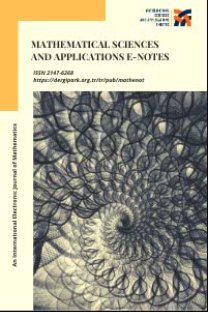A Presentation of The Frege Lie Algebra F/γ3 (F)'
Keywords:
Free Lie algebra, Presentation Gröbner basis,
___
- [1] Bergman, G. M., The Diamond lemma for ring theory, Adv. in Math. 29 (1978), 178-218.
- [2] Bokut, L. A., Unsolvability of the word problem and subalgebras of finitely presented Lie algebras, Izv. Akad. Nauk. SSSR Ser. Math. 36 (1972), 1173-1219.
- [3] Bokut, L. A., Embeddings into simple associative algebras, Algebrai Logika 15 (1976), 117-142.
- [4] Bokut, L. A., Algorithmic and Combinatorial Algebra, Kluwer, Dordrecht, (1994).
- [5] Bokut, L. A., Kolesnikov, P., Gröbner-Shirshov bases: from incipient to nowadays, Proceedings of the POMI 272 (1994), 26-67.
- [6] Bokut, L. A., Kolesnikov, P., Gröbner-Shirshov bases: from their incipiency to the present, J. Math. Sci. 116, 1 (2003), 2894-2916.
- [7] Bokut, L. A., Chen, Y., Gröbner-Shirshov bases: some new results, Proc. Second Int. Congress in Algebra and Combinatorics,World Scientific, (2008), 35-56.
- [8] Buchberger, B., An algorithm for finding a basis for the residue class Ring of a zero-dimensional polynomial ideal, Phd. thesis, Univ. of Innsbruck, Austria, (1965).
- [9] Buchberger, B., An algorithmical criteria for the solvability of algebraic system of equations, Aequationes Math., 4 (1970), 374- 383.
- [10] Drensky, V., Defining relations of noncommutative algebras, Institue of Mathematics and Informatics Bulgarian Academy of Sciences.
- [11] Shirshov, A.I., Some algorithmic problems for Lie algebras, Sibirsk. Mat. Z. 3 (1962) 292-296; English translation in SIGSAM Bull, 33(2) (1999), 3-6.
- [12] Smel’kin, A. L., Free polynilpotent groups I. Soviet Math. Dokl. 4 (1963), 950-953. II. Izvest. Akad. Nauk S.S.S.R. Ser. Mat. 28(1964), 91-122. III. Dokl. Akad. Nauk. S.S.S.R. 169 (1966), 1024-1025.
- ISSN: 2147-6268
- Yayın Aralığı: Yılda 4 Sayı
- Başlangıç: 2013
- Yayıncı: -
